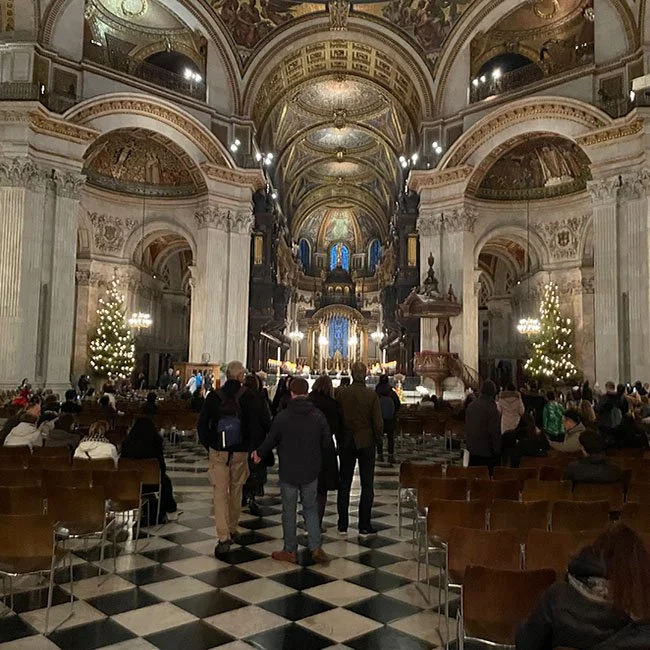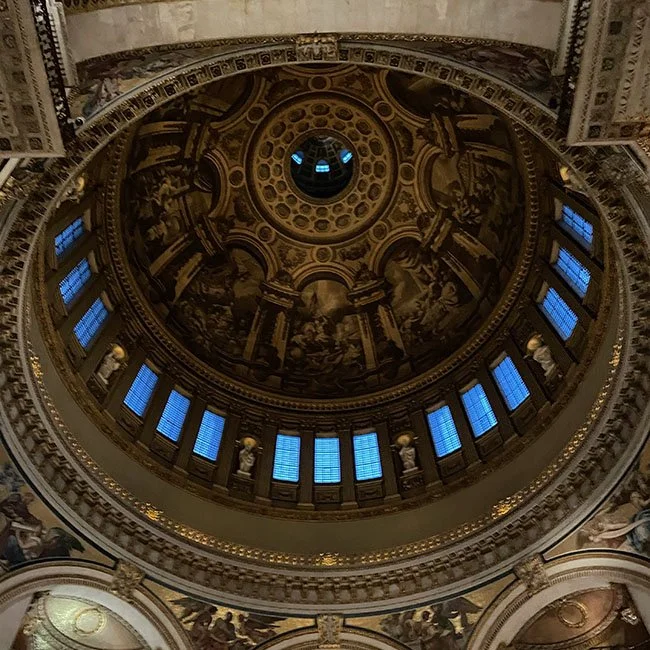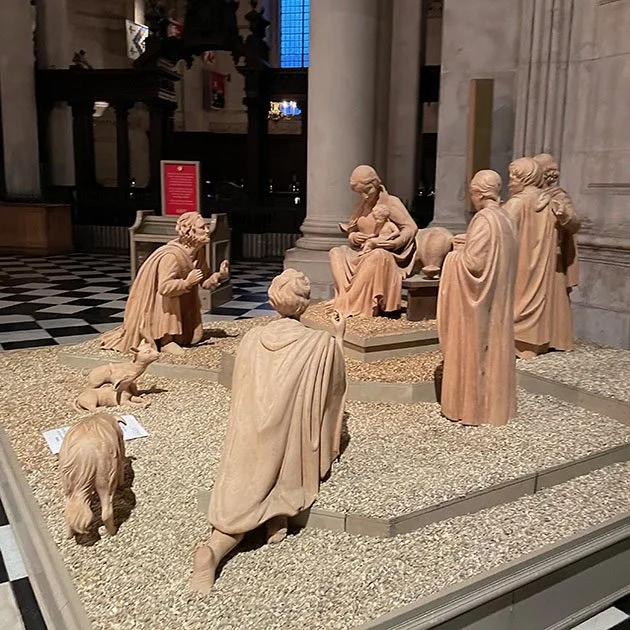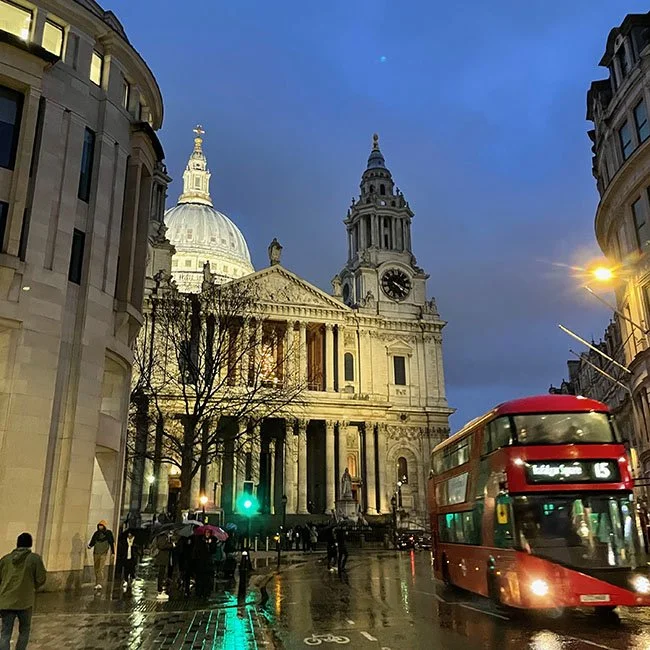St. Paul’s Cathedral
Front of St. Paul’s Cathedral as the sun was setting in London, December 2022
Where I Learned London’s Winter Days Are Short
Plan Your Visit | Destinations | Beautiful Buildings
St. Paul’s Cathedral is my favorite church building in all my travels and a favorite destination when I visit London. I find it is a great place to sit, rest, and reflect after a long day of walking in London, giving you time to enjoy the amazing architectural detail and peaceful energy.
2022 Visit
London is very walkable, and for my second visit during the 2022 holiday season, I walked to the cathedral mid-afternoon a couple of days after Christmas. It felt like it was much later in the day. I had already accomplished a lot that day visiting The Museum of the Home and burning my quads climbing The Monument to the Great Fire of London, so the setting sun as I approached St. Paul’s Cathedral had me concerned it was too late in the day to still be open.
I looked at my watch, and it was only 3:30 p.m. and then remembered that, due to London’s northern location, the winter days would be shorter than they are at home in Austin. (Around the Winter Solstice, Austin gets dark around 5:30 p.m.)
I arrived at the Cathedral Floor just as choir practice was ending, so I enjoyed the last few minutes before taking a seat to rest and enjoy. The Cathedral Floor was decorated so beautifully for Christmas, and the early sunset made the lights sparkle more brightly.
2019 Visit
During my first visit in October 2019, I stayed much longer explored the Cathedral Floor and Crypt, where many famous historical figures are buried. Like Westminster Abbey, many famous historical figures are buried here, including:
Sir Christopher Wren, the acclaimed English architect of St. Paul’s Cathedral
Arthur Wellesley, 1st Duke of Wellington, who defeated Napoleon at Waterloo
Florence Nightingale, founder of modern nursing
The excellent gift shop is also located in the Crypt; I purchased a rosary as a Christmas present for my mother.
History
Located in the City of London (a local government district that should not be confused with Greater London), it dominates the London skyline, as it stands some distance from the obscuring skyscrapers in the heart of the City’s financial district.
The present cathedral, designed by Sir Christopher Wren after the Great Fire of London in 1666, was completed in 1710 and remains one of the city’s most iconic landmarks. Its magnificent dome, among the largest in the world, has dominated the skyline for centuries and has been the venue for historic events including state funerals and weddings. Today, St. Paul’s continues to serve as both a place of worship and a symbol of resilience, faith, and British heritage.
Many know St. Paul’s as the wedding venue for (then) Prince Charles and Lady Diana Spencer’s “fairy tale wedding.” It was selected over the usual venue Westminster Abbey because it could accommodate more people and give the public a better chance to see the couple, as the cathedral is farther from Buckingham Palace. I remember watching the wedding as a little girl on TV in my aunt’s family room.
I think we all know how that turned out.
Usually, TV makes buildings look grander than they are, but TV captures the grandness of St. Paul’s Cathedral accurately, though the red carpet we saw during the wedding was only used for that occasion, so the bold checkered floor takes some getting used to (as I found out during my first visit in 2019).
London Pass
St. Paul’s Cathedral is an attraction covered by the London Pass, which provides access to over 100 London attractions; for convenience, you can use this pass through the Go City mobile app. I have used London Pass for all my trips and will continue this for future visits. Learn more about how it works. The cathedral easily accessed via London Underground (or The Tube); St. Paul’s station on the Central Line is right across the street.





